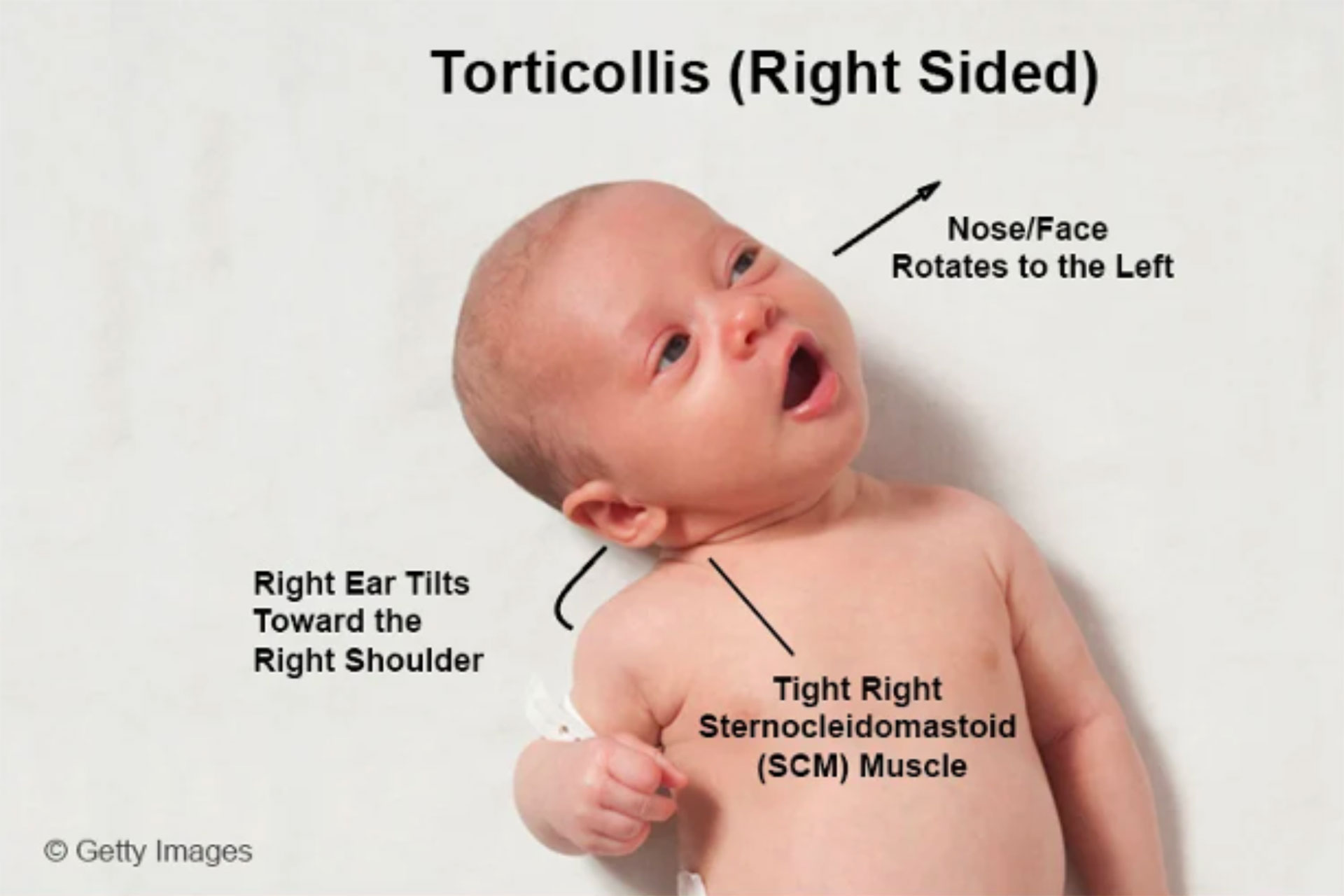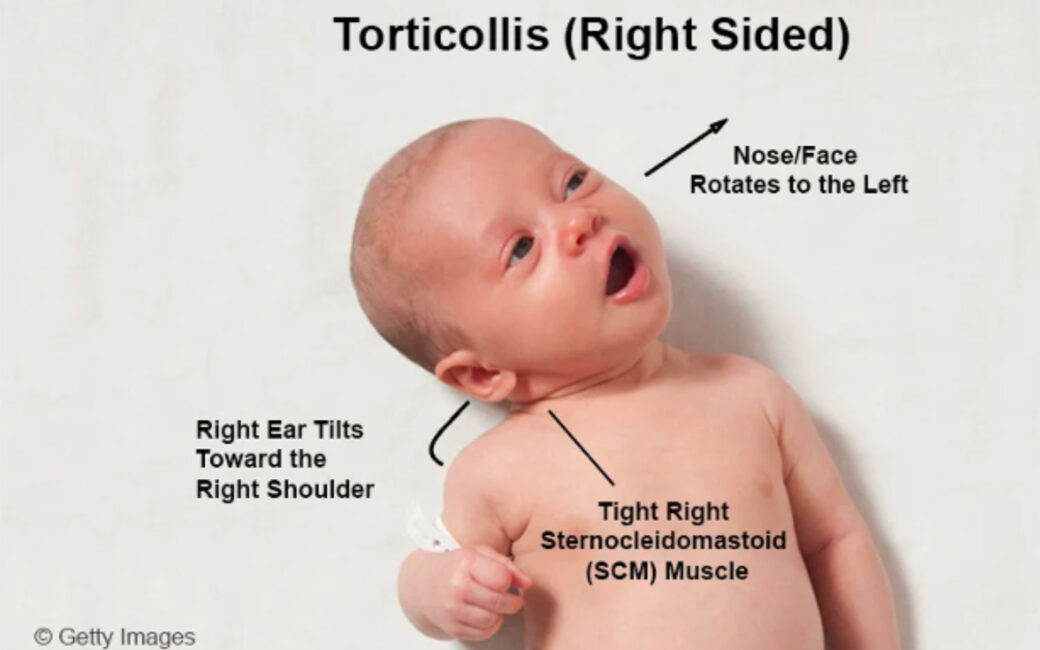What you need to know about torticollis
At Performance we care for patients throughout the lifespan, starting as early as infancy. One of the most common diagnoses in babies that can require physical therapy intervention is torticollis.
May 17, 2023 | Maddy Mazoue, PT, DPT, CSCS

At Performance we care for patients throughout the lifespan, starting as early as infancy. One of the most common diagnoses in babies that can require physical therapy intervention is torticollis.
What is it?
Torticollis, also referred to as “wry neck” or “twisted neck,” is the term for a condition in which there is tightness in the neck causing one’s head to tilt to one side. This condition is typically associated with babies and some sources say that can affect up to 16% of infants. The most common muscle involved is the sternocleidomastoid (or scm) which causes babies to tilt towards one side and rotate to the opposite.
Torticollis can happen for a variety of reasons, including positioning in the womb, time/position spent in car seats or carriers, breastfeeding preferences, or abnormalities within the neck muscles. Although this is a condition related to the muscles of the neck, torticollis has implications for the overall growth and development of your child. Tightness on one side of the neck can lead to changes in head shape, difficulty with developmental milestones including rolling, sitting, crawling and walking.
Prevention
The best way to prevent the development of torticollis is to encourage your baby to spend time in a variety of positions! One way to do this is to switch the location of toys in the crib or car seat every few days so they are encouraged to look in different directions. Also, make sure to take note of what position you are feeding your baby in. Try to balance the amount of time feeding on each side whether that is breast or bottle feeding. One of the best ways to limit torticollis and associated head shape changes is to encourage your baby to participate in tummy time. The NIH recommends starting with several 2–3 minute sessions throughout the day with newborns and steadily increasing the frequency and duration of sessions until they are reaching at least 1 ½-2 hours per day by the time they are 6 months old. Children’s Healthcare of Atlanta has a great resource on tummy time and positioning techniques.
Signs to look out for
Typically, torticollis develops over the first few weeks of life, so be on the lookout for the signs! Torticollis will typically present as a head tilt to one side and a rotation in the opposite direction. Though that is the most common presentation, you should also look out for:
- Strong preference for breastfeeding on one side
- Difficulty rolling to one side/always rolls over one side
- Trouble turning the head to look in one direction
- Flat spot on the side of the head
- Facial asymmetries
Treatment
The good news is, if caught and addressed quickly, babies typically respond very well to physical therapy. PT for this condition includes stretching, education on positioning, strengthening exercises, and promotion of developmental milestones. Your physical therapist will work with you to implement stretching techniques and identify ways to encourage symmetry and age appropriate development at home. If you have any concerns about your baby’s neck or head shape, reach out to your pediatrician or physical therapist so they can get your baby the care they need!
Image credit: ChoosePT.com

Maddy Mazoue
Maddy Mazoue, PT, DPT, CSCS, is a physical therapist and strength and conditioning specialist who specializes in developing athletes’ return to sport programs.
